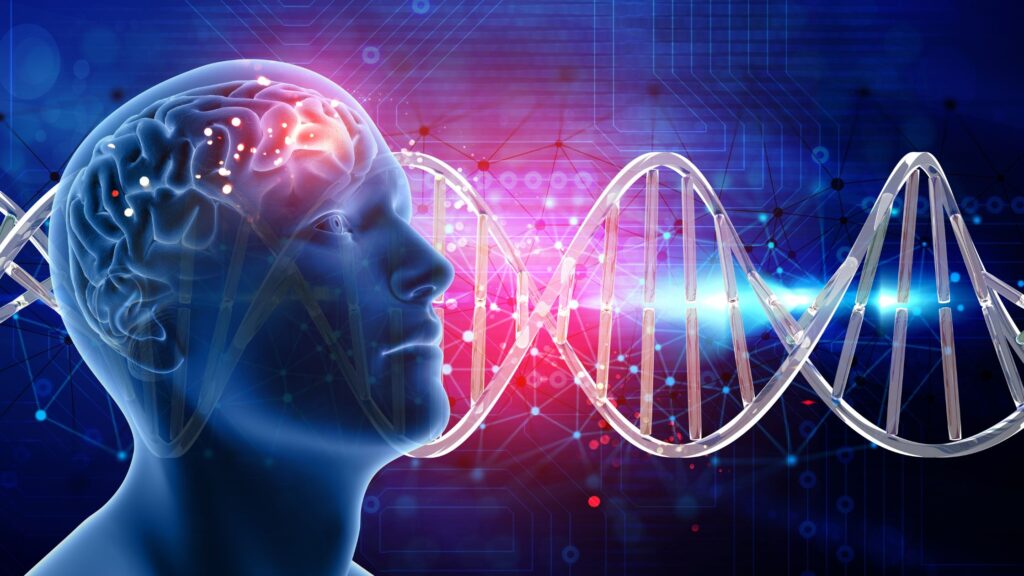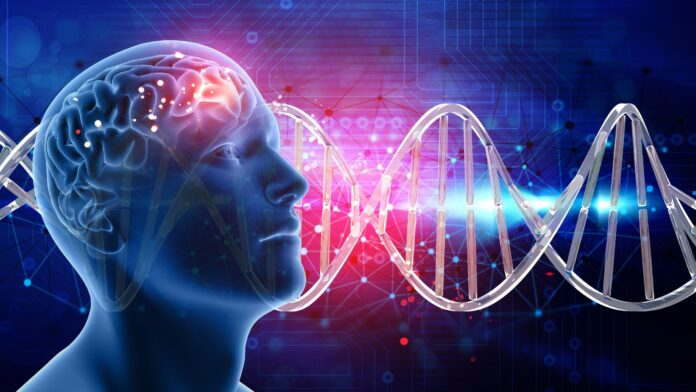Introduction of 10 Interesting Facts About the Human Brain
An interesting and complex organ, also known as the human brain, is one of the body’s most advanced. Science is still in a state of surprise about its inner workings and capabilities, even after much research on it. Our interest grows and the significance of preserving brain health is underscored by our growing understanding of the brain. 10 interesting facts about the human brain that you most likely were unaware of are covered in this article.
Table of Contents

The Human Brain: An Overview
Structure and Function
A wonderful work of biological engineering is the human brain. It is made up of about 86 billion neurons, each of which has synapses that allow them to communicate chemically and electrically. We are able to move, think, feel, and comprehend information because of this complex network.
Neurons and Synapses
Neurons are the basic building blocks of the nervous system and the brain. They are in charge of taking in sensory data from the outside environment, interpreting it, and directing our muscles accordingly. The points at which neurons connect with one another are called synapses, and they are essential to the brain’s operation.
Brain Lobes
The four principal lobes of the brain are the frontal, parietal, temporal, and occipital regions. Every lobe performs distinct tasks, including movement, language, sensory processing, and vision. These lobes’ synchronized activity enables us to carry out difficult tasks with simplicity.
Brain Plasticity
Neuroplasticity Explained
The brain’s ability to reorganize itself by forming new neural connections throughout life is referred to as “neuroplasticity”. This flexibility is necessary for learning, memory, and the healing of brain injuries.
Examples of Brain Plasticity
Neuroplasticity is frequently highlighted by the brain’s capacity to restore lost capabilities after a stroke. Rehab allows other brain regions to take up the functions that the injured portions of the brain were handling before.
Fact 1: The Brain is More Active at Night
Brain Activity During Sleep
In contrast to popular belief, the brain is very busy when you sleep. The brain performs a number of functions, such as consolidating memories and breaking down the day’s events, while the body sleeps.
The Role of Dreams
The brain’s activity during the night gives rise to dreams. They are thought to be involved in problem-solving, emotion processing, and assimilation of new information. This increased activity underlines how crucial sleep is to maintaining mental wellness.
Fact 2: The Brain’s Power Consumption
Energy Consumption
The brain uses a significant amount of energy for its comparatively tiny size. It consumes roughly 20% of the body’s overall energy. The significance of a well-balanced diet full of nutrients that support brain function is highlighted by this high demand for energy.
Oxygen and Glucose Needs
For the brain to work as best it can, oxygen and glucose must be continuously available. The rapid decline of cognitive functioning in the absence of these vital resources emphasizes the necessity of a robust cardiovascular system to maintain brain health.
Fact 3: The Brain’s Storage Capacity
Memory Capacity
The human brain is exceptionally good at storing memories. The brain is believed to be capable of storing up to 2.5 petabytes of data, or around 3 million hours of television. The brain’s extraordinary efficiency can be seen by its immense capacity for storage.
Comparison with Computers
The brain has processing power and storage capacity that are unmatched by computers. The brain uses a complex network of neurons and synapses to process information more sophisticatedly and subtly than computers, which store data in binary format.
Fact 4: The Brain Feels No Pain
Pain Processing in the Brain
It’s interesting to note that the brain is painless. It does not have pain receptors, but it does interpret pain information from different parts of the body. For this reason, patients can have brain procedures done while they are conscious and without experiencing any kind of discomfort.
Surgeries on the Brain
In order to determine the functioning of multiple brain regions and make sure that no vital areas are harmed, surgeons might stimulate various parts of the brain during brain surgery. Our knowledge of how the brain functions has greatly increased as a result of our capacity to do awake brain surgery.
Fact 5: The Left-and-Right Brain Myth
Debunking the Myth
It’s a fallacy that individuals are either “right-brained” (creative and intuitive) or “left-brained” (logical and analytical). For most tasks, the brain’s 2 halves cooperate in a complementary way.
Real Functions of Brain Hemispheres
Both hemispheres of the brain work closely together, even if some tasks are more specialized in one than the other, such as language in the left hemisphere and spatial ability in the right. For cognitive function to be balanced, this synergy is necessary.
Fact 6: The Brain’s Ability to Generate New Cells
Neurogenesis Explained
It was once thought that humans have a set number of brain cells at birth. But new studies have revealed that the brain is capable of producing new neurons, a process known as neurogenesis, especially in the hippocampus, an area related to memory and learning.
Factors Influencing Neurogenesis
It has been demonstrated that neurogenesis is helped by mental stimulation, physical activity, a balanced diet, and enough sleep. These results highlight how crucial a healthy lifestyle is to preserving memory and brain health.
Fact 7: The Brain’s Role in Emotional Intelligence
Emotional Processing Centers
The limbic system of the brain, which includes the hippocampus and amygdala, is a must for processing emotions. These domains support our ability to identify, comprehend, and react to emotional cues.
Impact on Decision-Making
Knowing how to manage emotions or emotional intelligence, has a big influence on how decisions are made. Effective problem-solving and improved interpersonal connections are linked to high emotional intelligence.
Fact 8: The Brain’s Connection with Gut Health
The Gut-Brain Axis
The gut and the brain interact with each other in both directions through the gut-brain axis. This relationship illustrates how mental health and digestive health are related to one another.
Impact of Diet on Brain Function
Both the stomach and the brain are supported by a nutritious diet high in probiotics, vitamins, and minerals. Foods high in vital nutrients that support mental health and good brain function include yogurt, leafy greens, and fish like salmon.
Fact 9: The Brain’s Plasticity in Learning New Skills
Skill Acquisition
The brain’s capacity to adapt and change itself is necessary for learning new abilities, and this process is strongly dependent on neuroplasticity. The brain’s plasticity is at work while learning to play an instrument, pick up a new language, or take up a new pastime.
Long-Term Potentiation
The building up of synapses based on recent patterns of activity is known as long-term potentiation (LTP). The significance of ongoing education and mental stimulation is shown by the fact that this process is essential for memory and learning.
Fact 10: The Unique Fingerprint of Each Brain
Brain Structure Uniqueness
The brain of an individual is as unique as their fingerprint. distinctions in brain structure and connectivity patterns contribute to the individuality of each person’s beliefs, actions, and dispositions.
Implications for Neuroscience
Neuroscience has both opportunities and challenges because every brain is different. With our growing understanding of the individual variances in brain structure and function, personalized approaches to therapy and education are becoming more practical.

Brain facts books
1. Brain Boosting Facts for Curious Minds, A Trivia Book for Adults & Teens
2. Brain-fizzing Facts
3. 51 Must Know Facts About Brain
Conclusion
The human brain is an incredible organ that is full of incredible information and endless mysteries. The brain continues to awe scientists and laypeople alike, with its activities during the night and its enormous storage capacity. Knowing these statistics emphasizes how crucial it is to keep your brain healthy with a balanced diet, frequent exercise, and mental stimulation. We anticipate learning even more secrets about this amazing organ as research continues.
FAQs
How much do we use our brains for?
Contrary to the myth that we only use 10% of our brain, we use virtually every part of our brain, and most of the brain is active almost all the time.
Can brain exercises improve cognitive function?
Yes, engaging in activities that challenge the brain, such as puzzles, learning new skills, and regular mental stimulation, can enhance cognitive functions and potentially delay cognitive decline.
How does aging affect the brain?
Aging can lead to changes in the brain, including reduced plasticity and the loss of neurons, which can impact memory and cognitive function. However, a healthy lifestyle can mitigate some of these effects.
Is it possible to enhance brain function through a diet?
Absolutely. Diets rich in antioxidants, good fats, vitamins, and minerals provide the nutrients needed to maintain and improve brain health.
What are some common myths about the brain?
Common myths include the belief that we only use 10% of our brain, that people are either left- or right-brained, and that brain damage is always permanent. These myths have been debunked by modern neuroscience.

